Home / Understanding Truck Tires: Load Ratings and Sizes
Your truck’s tire specs give you more information than you realize in the alpha-numeric code on the side. Learn to read and understand what these letters and numbers mean for your tires’ truck load index, speed rating and size. Understanding these values will make you a better consumer when choosing tires for your truck.
For help selecting which truck body is right for your needs, click here to see all of Reading’s truck bodies.
If you take a close look at a tire, you will find a large amount of information. Everything from the manufacturer’s name to the tire size and load rating appears on the sidewall. Interpreting these numbers requires you to know what values to look for and their meanings.
On the sidewall, you will find the tire’s type, the width, aspect ratio, construction, wheel rating, load index and speed rating. You can identify the values based on their position relative to each other and how many numbers or letters they have. The Tire and Rim Association standardizes these values for all American tire manufacturers.
Some tires may also have Uniform Tire Quality Grading, UTQG, which refers to information for traction and temperature grades. AA traction grades perform best in wet conditions, and the classes go down in performance — AA, A, B and C. Temperature categories refer to how well the tires dissipate heat at various speeds. Those rated with A perform well at speeds over 115 mph. B-rated tires operate best between 100 mph and 115 mph, while C tires remove heat best at speeds between 85 mph and 100 mph.
The first part to look for is the string of letters and numbers that may start with P, LT or no letter. For example, P235/75R15 or LT215/65R15. Manufacturers put a lot of information into this alpha-numeric code — the tire type, width, aspect ratio, construction and tire diameter.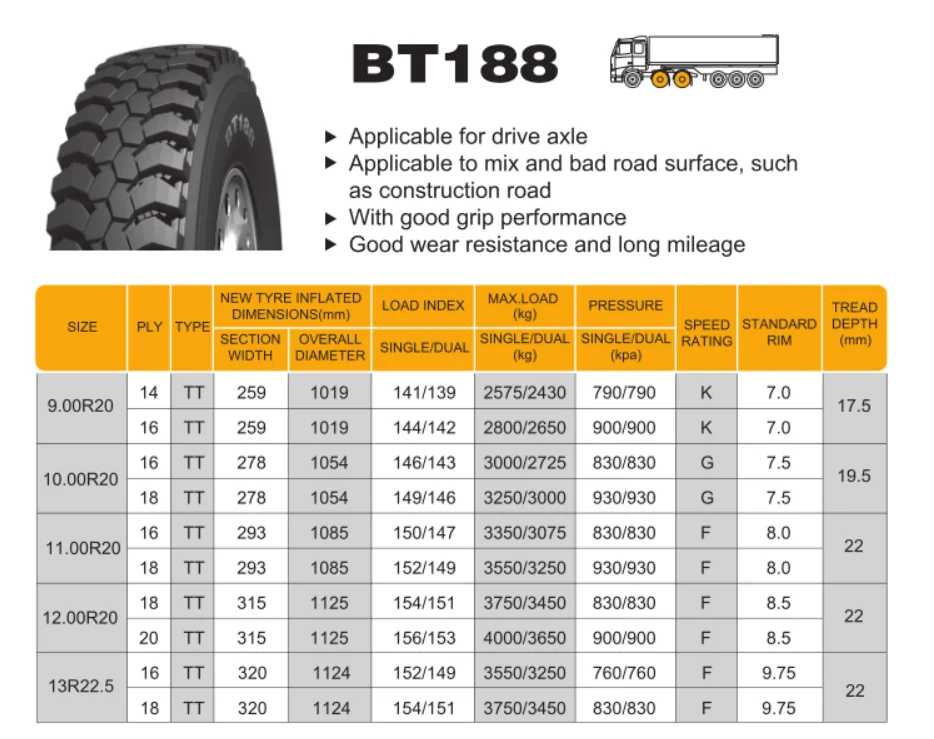
Next to this extended code, you will also see the load index and speed rating, both of which you must know to find the right tires for your loaded work truck.
To make the most of this information, you need to understand what the tire size information means as well as the load ratings and speed information.
The tire size typically starts with a letter indicating the type and ends with a two-digit number, giving the rim size. Between these parts, you will see additional information about the tire size and construction.
The first letter represents the type of vehicle you should install the tire on. P indicates a passenger vehicle or light-duty truck. Generally, these tires require lower pressures than other tires. LT designates a light-duty truck, but these often accompany larger 3/4 and one-ton pickups. If there is not a letter at the beginning, the tire is a Euro-Metric tire, usually used on passenger vehicles.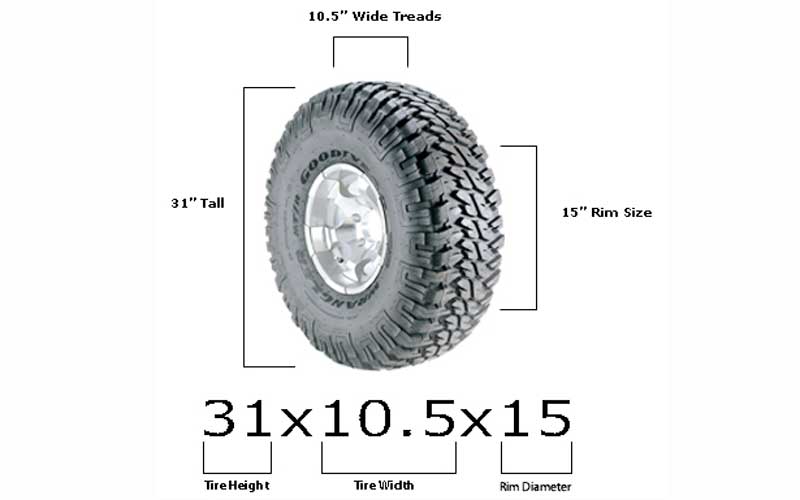 In the example P235/75R15, the P means this tire fits onto a passenger vehicle.
In the example P235/75R15, the P means this tire fits onto a passenger vehicle.
Look at the three numbers after the letter or the first three numbers in front of a slash mark if your tire does not have a letter at the beginning. These numbers give the measurement of the tire’s width from sidewall to sidewall in millimeters. Most tire measurements come from the metric system, regardless of the company making the tires. The example of P235/75R15 has a width of 235 millimeters between sidewalls.
After the slash mark, you will see a two-digit number. This value refers to the aspect ratio, which is the percentage of the sidewall’s height to its width. In the example tire, P235/75R15, the 75 is the aspect ratio. This tire’s sidewall height measures 75% of the width of the sidewall.
Following the aspect ratio, you will see one of three letters — R, B or D. This letter tells you about the tire’s construction.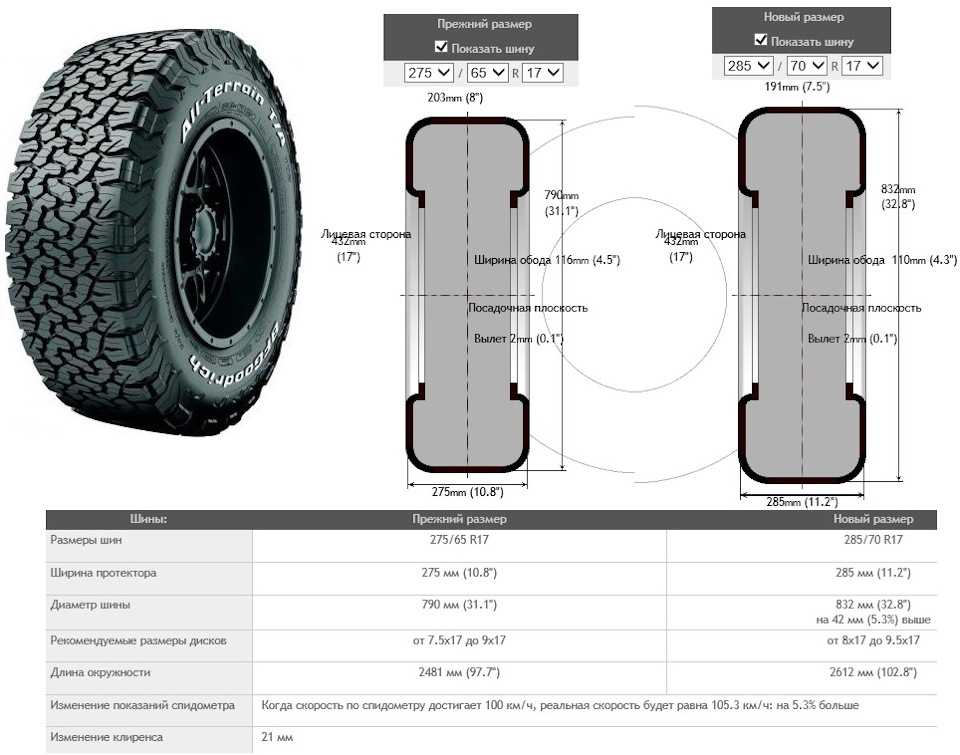 An R designates radial tires, which have their internal cords laid at 90-degree angles to the tire’s centerline.
An R designates radial tires, which have their internal cords laid at 90-degree angles to the tire’s centerline.
Bias-ply tires have a D in this position to indicate their diagonal design. On these types of tires, the cords cross each other at 30 to 45-degree angles. While once common early in the 20th century, bias-ply tires no longer dominate the market. They have been replaced by longer-lasting, more comfortable radial tires.
Belted tires have a B to designate their format. These tires mix the diagonal design of bias-ply with added belts inside the construction. While rare, these have applications on some off-road trucks, trailers and antique vehicles.
For the example used, P235/75R15, the R means its construction is radial.
While the sidewall width uses millimeters, the wheel diameter, the last digits after the construction letter, comes in inches. The larger the number here, the larger the wheel size. If you replace your rims, you will also need to change the tires to fit.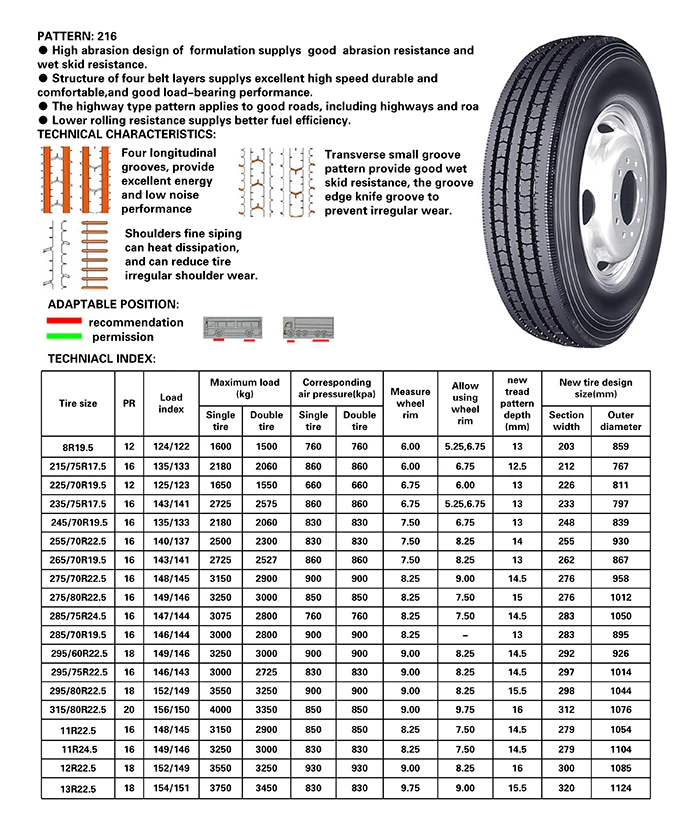 Be careful when changing wheel sizes because larger wheels affect the handling of the vehicle.
Be careful when changing wheel sizes because larger wheels affect the handling of the vehicle.
In the example tire, P235/75R15, the 15 at the end means you must install it on a 15-inch diameter wheel.
Following the size information, you will see two numbers and a letter. The numbers give the load rating for the tire, while the letter indicates the speed rating.
Using P215/65R15 85H as an example, the 85 gives the load index, also called the tire ply rating, and the H is for the speed rating, which tells you the maximum speed at which you should use the tires. This speed ranges from 3 mph to 186 mph.
Often, you will see a number and letter following the tire size. This set of information denotes the tire load and speed rating. On some tires, you may see three letters instead of one. The first gives the speed rating while the next two indicate the load range.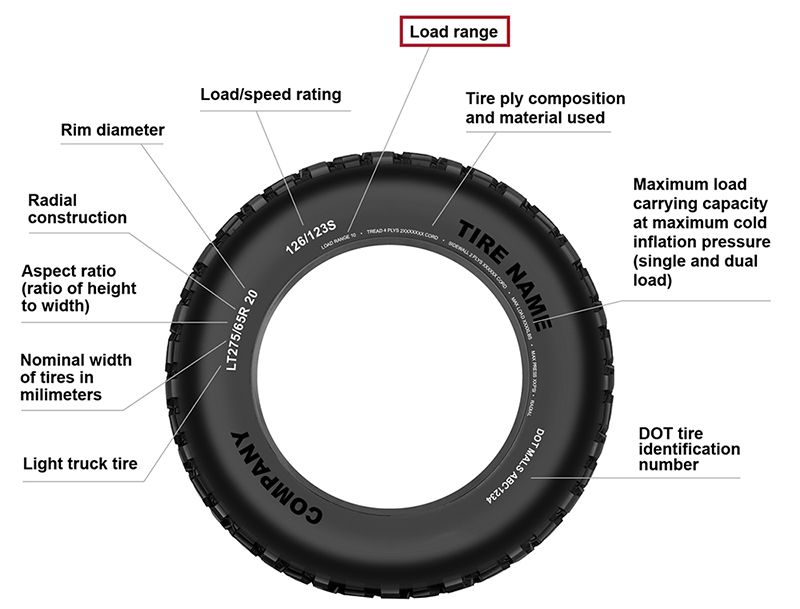
1. Tire Load Range and Tire Ply Rating
The tire load range is also known as ply rating — a term that dates back to the days of bias-ply tires, which had different numbers of ply layers. More layers indicated a better and stronger tire. Today, ply rating still refers to the strength of the tire, but since fewer, stronger plies are used, the numbers have been replaced by load range letters.
The load ranges for passenger tires have a listing beneath the tire code with information about the maximum load range and tire pressures. The load range indicates the heaviest load the tire can handle in pounds. Maximum tire pressure indicates the highest you can inflate the tires, but do not fill your tires to this pressure. It reflects the highest pressure the tire can handle when carrying its maximum load. Use the pressure given in your vehicle’s owner’s manual for the ideal tire pressure that creates the most comfortable and safest ride.
Light truck load ranges have letters B, C, D, E and F, and they have increasing maximum pressures.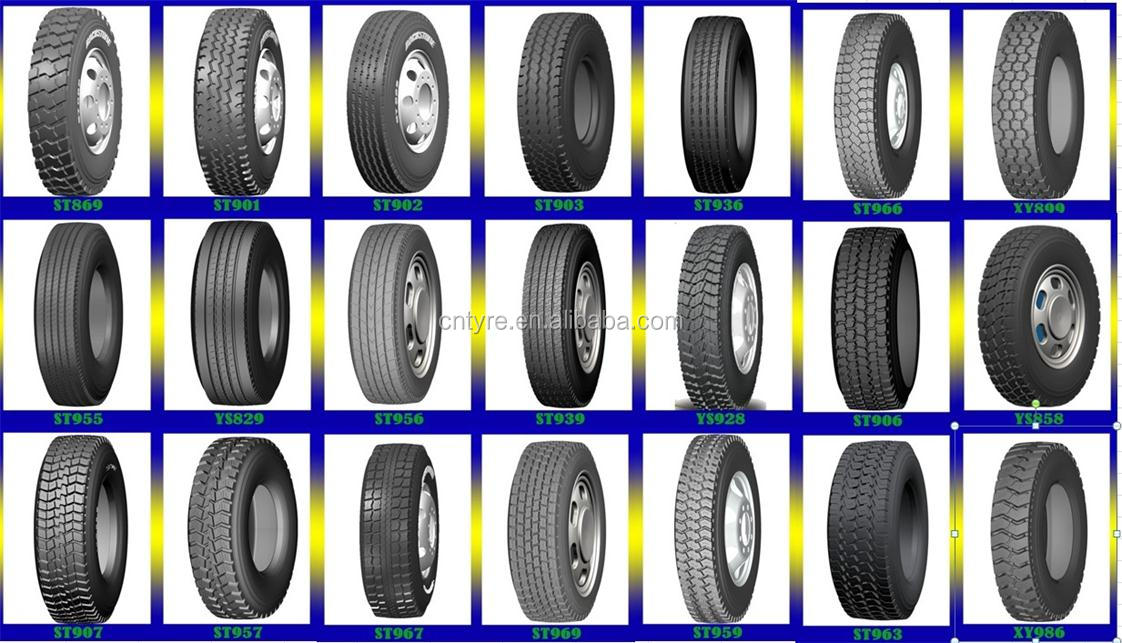 The lowest pressure is for B tires with 35 psi, and C has a pressure of 50 psi. The pressures increase in increments of 15 from 65 psi, 80 psi and 95 psi for tires with load ranges of D, E and F. For work trucks, the most common load ranges are C, D and E. Commercial trucks, which have much higher carrying requirements, have load ranges from F through L.
The lowest pressure is for B tires with 35 psi, and C has a pressure of 50 psi. The pressures increase in increments of 15 from 65 psi, 80 psi and 95 psi for tires with load ranges of D, E and F. For work trucks, the most common load ranges are C, D and E. Commercial trucks, which have much higher carrying requirements, have load ranges from F through L.
In some cases, you may see a number after the load range number, for example, C1 or C2. They still have the same number of plies, but the numbers designate differing max pressures.
If you see a pair of load ratings, the tire manufacturer did not make a mistake. Instead, these LT tires have the load ratings for dual tires. The first number gives the load index for the tires when used on single axles. The second number is how much the tire can handle when used on a dual axle.
For instance, if you see a 104/101 for the load index, this means the tire has an index of 104 when used by itself but only 101 when installed on a dual-tire axle. The second number is usually lower because of unequal load sharing when the tires are paired together. However, when the tire is acting by itself, it can support a higher weight.
The second number is usually lower because of unequal load sharing when the tires are paired together. However, when the tire is acting by itself, it can support a higher weight.
The load index on a tire gives a numerical value for the maximum weight the tire can handle when it is inflated to its recommended pressure. Higher numbers correlate to the tire’s ability to bear heavier loads. Indices start at 1, which can carry 102 pounds, and they go up to 150, which can hold up 7,385 pounds. In the example, P215/65R15 85H, the 85 load index means the tire can carry up to 1,135 pounds.
Like truck tire load ratings, the higher the load index, the more robust the tire is. Higher load indices correspond to tires used for hauling cargo or for installation on work trucks. No matter how strong the tire is, though, it’s important to remember to never carry weights that are heavier than your tires or vehicle’s suspension are rated for.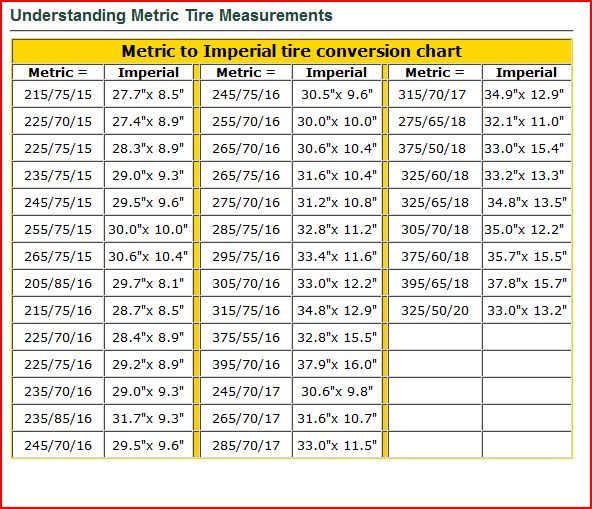
In addition to load ranges and indices, you also need to know about the speed ratings to keep your truck and cargo safe and to avoid damaging your tires. Just as tires have load indices to limit the amount they carry, they also have ratings for their maximum speeds. In the United States, most speed ratings on tires surpass the limits on highways. You should never exceed the posted speeds, regardless of the ability of your tires. Nor should you drive your truck faster than the tires’ speed ratings.
The speed rating has a designation after the load index number and before the load range letter if present. The lowest speed for tires is 75 mph for L rated tires. Only use these for off-road trucks that cannot reach high speeds due to the rough conditions. Keep in mind that speed ratings do not correlate alphabetically. See the speed ratings for various tires listed below and their standard vehicles:

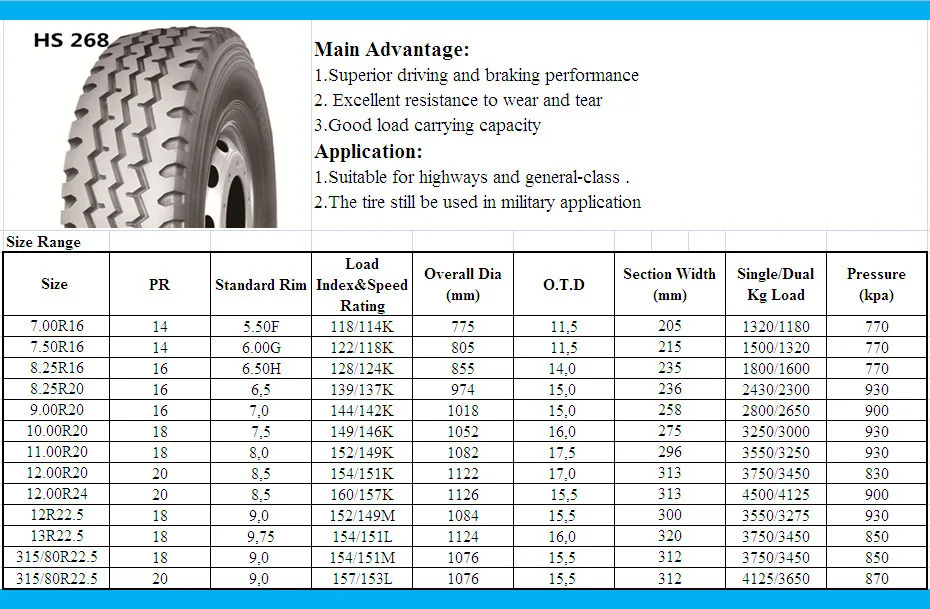
Typically, for work trucks, speed is not the most critical factor, which explains why a speed rating of R for heavy-duty trucks has a limit of only 106 mph. Those who drive sports cars or race usually require specialty tires built for speed. If you need to haul cargo, look for the load index or range, which will help you to identify the best tires for your operation.
In the example tire, P215/65R15 85H, the H indicates the speed index of up to 130 mph.
When you install tires onto your truck, choose tire sizes and load ratings recommended by the manufacturer. However, the size and strength of your tires you need for your vehicle will change if you customize it by adding on service bodies, platforms, tow hooks or other features.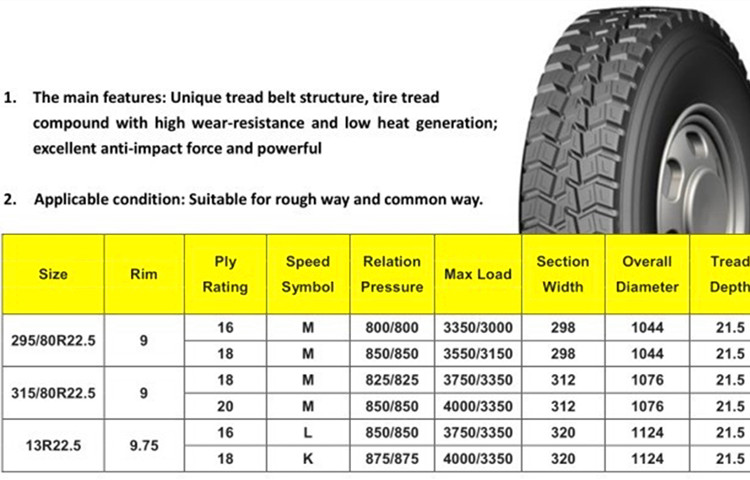 Ask us about the recommended chassis and tire loads needed for such additions to your truck. By pairing the right tires with your customized work truck, you will ensure peak productivity from the vehicle.
Ask us about the recommended chassis and tire loads needed for such additions to your truck. By pairing the right tires with your customized work truck, you will ensure peak productivity from the vehicle.
The tires you install on your truck are only one part of customizing your vehicle to your job. Service bodies and similar add-ons transform your purchased vehicle into a work machine. In fact, if you have a service body on your truck, you may need higher rated tires to hold up the extra weight you carry.
Find the service bodies and other ways to customize your truck to perform best at what you do by checking out our products at Reading Truck. If you have questions about the best options or want to create a customized work truck, contact us today.
Tire size can be confusing. Some numbers on the sidewall are listed in millimeters while others are inches. Plus, the right size for your car, truck, or trailer can differ depending on where and how you drive.
You can see your original equipment tire size in your owner’s manual or on the placard generally located on the driver’s side door jam. This is the sizing recommended by the vehicle manufacturer.
If you’re interested in switching out your tires for a different look or performance, a good place to start is the numbers and other indicators on your existing tires’ sidewall. Next, have a tire professional help you determine a tire size range that will fit your vehicle and driving needs.
Here’s what those numbers and indicators on the sidewall indicate and how to understand them:
A: TIRE TYPE The first letter in the code tells you what class of tire it is.
P stands for passenger vehicle tire. P-class tires include cars, SUVs, crossovers, minivans and smaller pickup trucks.
LT means light truck tire, designed for vehicles that are capable of carrying heavy loads, towing trailers, or for those looking for an extra heavy duty option. These are often equipped on three-quarter or 1 ton trucks and SUVs.
These are often equipped on three-quarter or 1 ton trucks and SUVs.
ST stands for Special Trailer. These tire sizes are meant for trailers, including fifth wheels and other travel trailers, as well as boat and utility trailers.
If there’s no letter before the first number, you have a metric tire most commonly referred to as European size. It’s also measured in millimeters but may have a different load capacity than a P or LT tire.
B: TIRE WIDTH The three-digit number following the letter is the tire’s width (from side to side, looking at the tire head on) in millimeters. This may also be referred to as the section width.
C: ASPECT RATIO The forward slash separates the tire width number from the two-digit aspect ratio. The bigger the aspect ratio, the higher/taller the tire’s sidewall, or “profile” as it’s sometimes called.
The aspect ratio is indicated on the tire sidewall as a percentage. It’s the height of the sidewall measured from wheel rim to top of the tread, expressed as a percentage of tire width.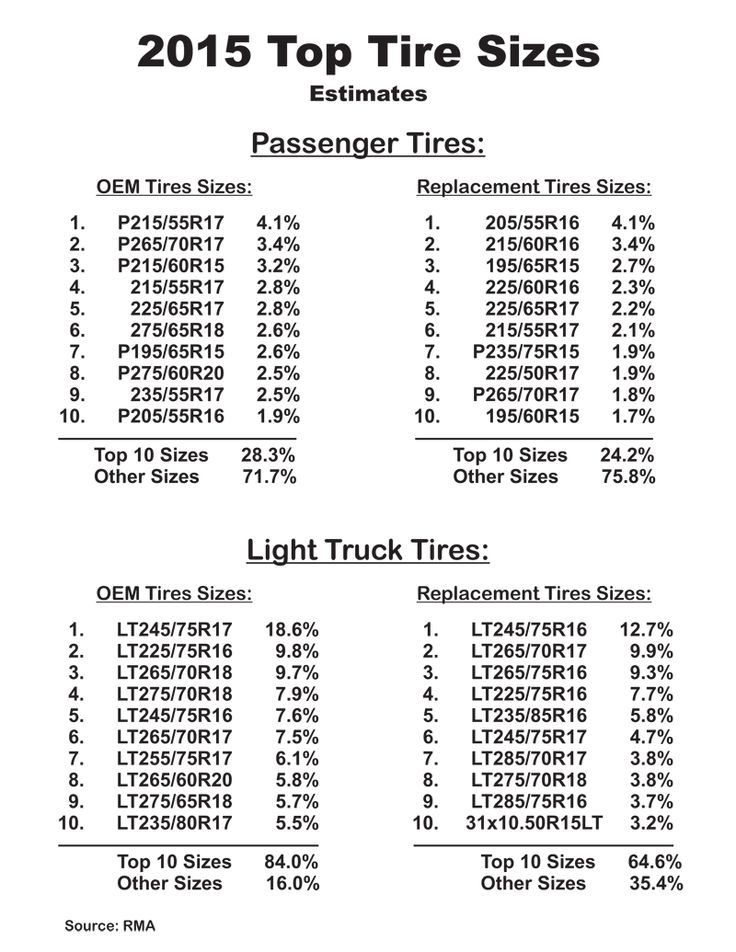
In this example, the aspect ratio is 65, meaning the sidewall is 65 percent as high as the tire is wide. To get the sidewall height, take the tire width of 215 mm and convert it to inches (8.46). Then multiply this by 65% (.65). This gives you an answer of 5.5, the sidewall height in inches.
D: CONSTRUCTION TYPE This single letter tells you about the internal construction of the tire.
R is for radial tires, the industry standard for most tires today. They have better road grip, lower rolling resistance for better gas mileage, ride comfort and durability than previous generations of tires. In a radial tire, the plies — layers of strong cords made of a blend of polyester, steel and fabric and coated with rubber — are laid perpendicular to the direction of travel.
D is for tires built with diagonal (crisscrossed) plies, called bias-constructed tires. They are also called conventional, x-ply, or cross-ply tires. Some motorcycle and trailer tires still use this internal construction.
Some motorcycle and trailer tires still use this internal construction.
Some run-flat tires are identified with an F followed by the type of internal construction.
E: WHEEL DIAMETER This two-digit number specifies wheel diameter in inches. It’s the distance between the two bead seat areas (where a tire gets tightly sealed onto the wheel).
F: LOAD INDEX The two-digit or three-digit number that follows the gap specifies tire load index. The load index symbol indicates how much weight a tire can support, based on the following standard chart. In our example, the load index is 89, which indicates the tire has a load capacity of 1,279 pounds, when inflated to the tire’s maximum air pressure rating.
G: SPEED RATING The last letter is the tire speed rating. This indicates the top speed it’s safe to travel at for a sustained amount of time. A tire with a higher speed rating can handle heat better and provide more control at faster speeds. The maximum operating speed of a vehicle is no more than the lowest speed rating of all tires mounted on the vehicle. (Of course, you should always abide by speed limits for safer driving.) Speed rating is usually, but not always, a single letter (see the chart).
The maximum operating speed of a vehicle is no more than the lowest speed rating of all tires mounted on the vehicle. (Of course, you should always abide by speed limits for safer driving.) Speed rating is usually, but not always, a single letter (see the chart).
Below you will find several charts that will help you understand tire sizing numbers, including a load index chart and speed rating chart.
A tire size calculator is a quick way to see whether the tire size you’re considering will likely fit your car, SUV, sports car, light truck or crossover.
But remember that is only an estimate. It’s important to stay within the sizing tolerances of your vehicle. Tires that are the wrong size could cause some pull in the steering wheel, rub against the suspension or body of your vehicle, reduce clearance on hills, or result in a stiffer or noisier ride.
If you’re considering mounting a different tire size on your vehicle, check with a tire expert.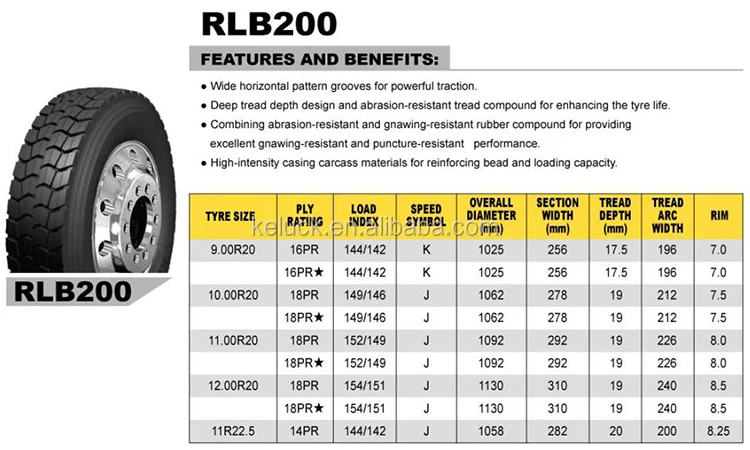 Find out whether the tires and wheels you have your eye on are the right fit for your vehicle’s suspension, gearing, and bodywork. And ask how any differences in revolutions per mile, tire speed, load index, and speed rating will affect your ride quality and vehicle performance.
Find out whether the tires and wheels you have your eye on are the right fit for your vehicle’s suspension, gearing, and bodywork. And ask how any differences in revolutions per mile, tire speed, load index, and speed rating will affect your ride quality and vehicle performance.
See how new tires and rims will look on your car or truck using our Virtual Wheels simulator, available at any Les Schwab.
Find Your Store
Truck tires during operation take on an increased load and are often forced to serve in extreme conditions. When choosing tires for trucks, it is important to carefully approach the process, to know the main criteria and classification of specialty tires, as well as to understand their differences from tires for cars.
Contents
There are several parameters in which truck tires differ from passenger car tires.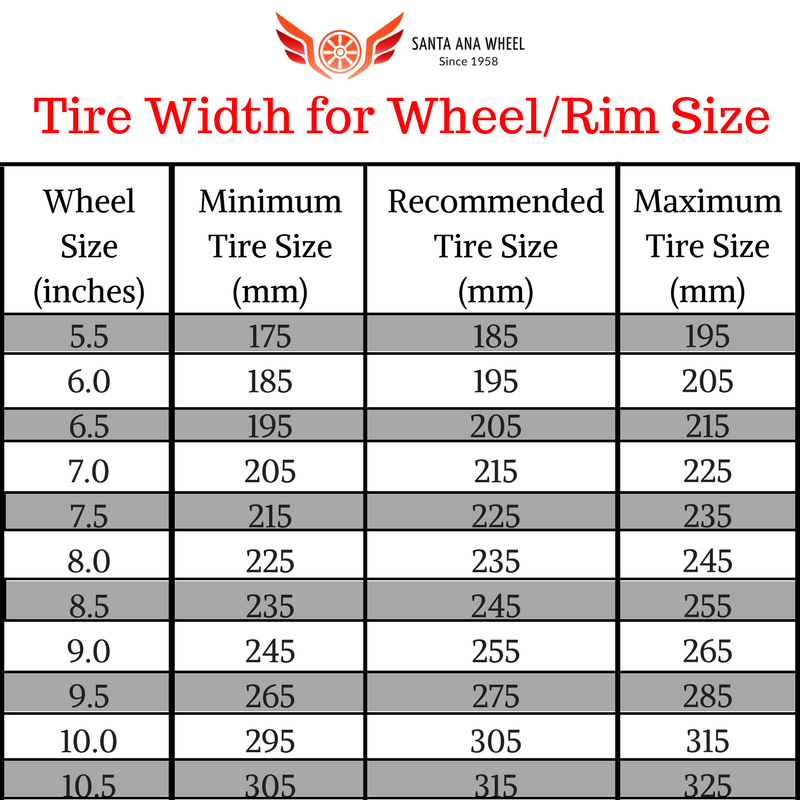 The main ones should include:
The main ones should include:
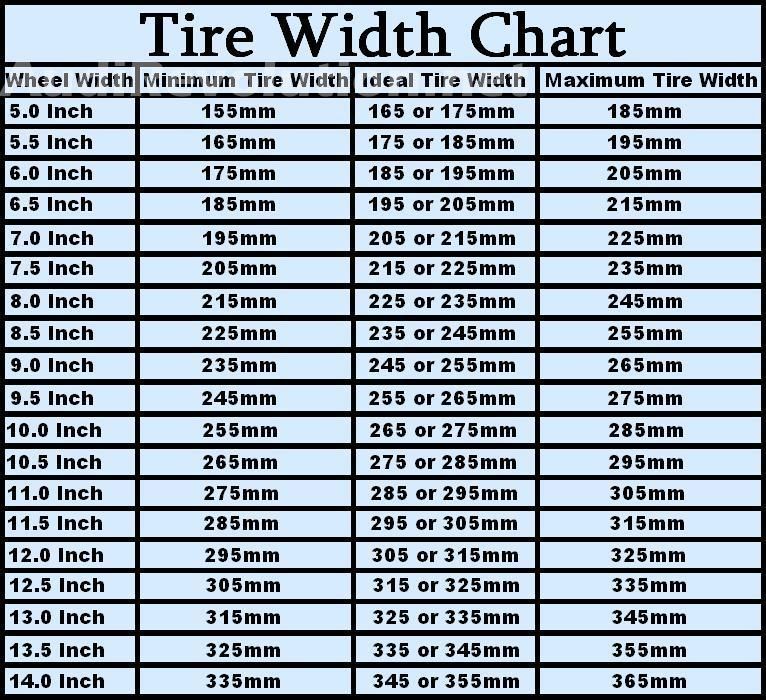 This is necessary, because during operation such vehicles carry heavy loads.
This is necessary, because during operation such vehicles carry heavy loads. This is just a small list of differences that are typical for truck tires, but they fully convey the features of such products and the increased requirements for the composition of the rubber from which they are made.
When choosing a product, it is necessary to take into account a number of features used to classify such tires. Let's take a look at the main points below.
Rubber for trucks is conditionally divided by type of car. Tires are:

The rubber is marked S(Steer) and has a special pattern that provides straight-line movement, is soft and has a small number of tread elements to reduce noise. It is mounted on the steering axle and takes on most of the load.
Such tires are often called controllable, because they respond to commands and must provide driving comfort. Winter tires have a lot of sipes that improve braking performance on ice or snow. nine0003
nine0003
They are marked D (Drive). They take on heavy loads, so the tires contain components to improve wear resistance. The side part is additionally reinforced to increase the load capacity.
In the manufacture, emphasis is placed on the ease of starting and reducing the braking distance. The tire tread is distinguished by larger lamellas in large numbers, which have a recess of various shapes. This feature ensures stability and cross-country ability. nine0003
They are designated by the letter U (Universal), are rare and can be installed on the leading, steering or other axles. Many people prefer to buy truck tires of this type to save money, in order to avoid the financial costs of purchasing two or more sets of rubber.
The same method solves the issue with spare wheels. But the characteristics of universal rubber are worse, the level of comfort and safety is reduced. However, such tires are often fitted to passenger buses.
nine0003
When choosing tires for trucks, it is necessary to take into account the features of operation, namely the possibility of using tires in specific conditions. Conventionally, products are divided into several categories (by type of transport):
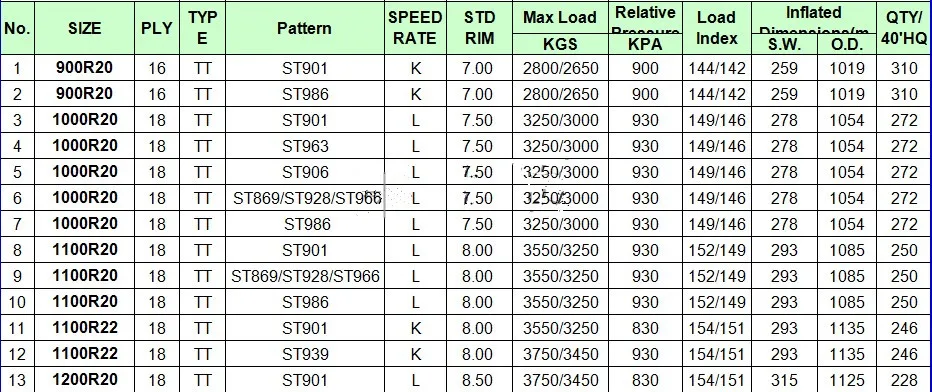 nine0008
nine0008 When choosing truck tires for 22.5 inches or another size, you must consider the characteristics of the tread. The performance parameters of the product and the conditions under which the tire can be used depend on this parameter. Conventionally, the drawing can be of the following types:
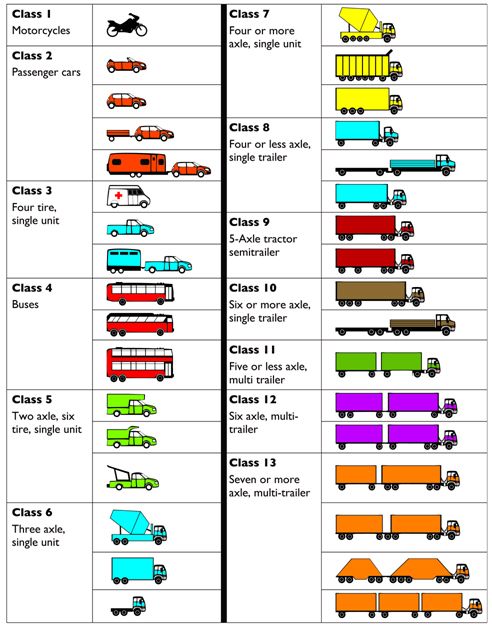
When choosing tires for trucks, you need to pay attention to the design features of the frame. From this position, two types of construction are distinguished:
 Depending on the requirements for load capacity, the cord can be made using textile or metal elements. Sometimes a universal (mixed) approach is used. The features of such tires are low resistance to damage, the ability to withstand heavy loads, wear uniformity, and high price.
Depending on the requirements for load capacity, the cord can be made using textile or metal elements. Sometimes a universal (mixed) approach is used. The features of such tires are low resistance to damage, the ability to withstand heavy loads, wear uniformity, and high price. Bias tires are more popular due to their resistance to damage, lower price, and the possibility of installation on special equipment. These tires are not used on passenger cars. Of the minuses - greater rigidity, uneven wear and less comfort during operation.
When choosing a tire for a truck, you need to look not only at the price, but also at the size of the product. This parameter is indicated on the side using standard notation. Using them, it is easy to determine the diameter, height / width of the profile, purpose and other features of the tire. nine0003
Using them, it is easy to determine the diameter, height / width of the profile, purpose and other features of the tire. nine0003
For example, consider the classic truck size -385/70 R22.5. From this entry, we can conclude that the tire has a diameter of 22.5 inches, a profile width of 385 mm and a height of 70 mm. The symbol R denotes the radiality of the structure.
In addition to these figures, the landing parameter in inches and the load index are indicated. The latter is indicated in the form of two numbers, for example, 140/142 for twin axles. The letter with the speed index is also indicated. We will discuss this issue in more detail below. nine0003
Bias tires do not have a special marking or a dash is placed between the width / height of the profile part. As for full-profile rubber, it is easy to recognize by the inscription "00". This indicates a 100% height to width ratio.
When buying truck tires, pay attention to the load index. According to this indicator, you can determine the upper weight threshold set by the manufacturer for rubber. It must be compared with the passport data of the carrying capacity of the transport and the permissible weight per axle wheel. Tables can be used to determine the correct index. Only two fields are available in them - the value itself and the weight that is characteristic of it. nine0003
According to this indicator, you can determine the upper weight threshold set by the manufacturer for rubber. It must be compared with the passport data of the carrying capacity of the transport and the permissible weight per axle wheel. Tables can be used to determine the correct index. Only two fields are available in them - the value itself and the weight that is characteristic of it. nine0003
In relation to trucks, you need to know that the wheels can have two tires. In this case, you need to choose tires with the possibility of such an application. You can recognize a suitable model by specifying two digits of the load index, indicated through a slash (as in the example discussed above).
If the truck has an axle with twin wheels, the load is calculated for six tires, not four. The tables most often show data for indices from 50 (corresponding to 190 kg) to 169(5.8 tons).
For our example “140/142”, we can say that the tires can withstand a weight of 2.5 tons with one wheel, and 2.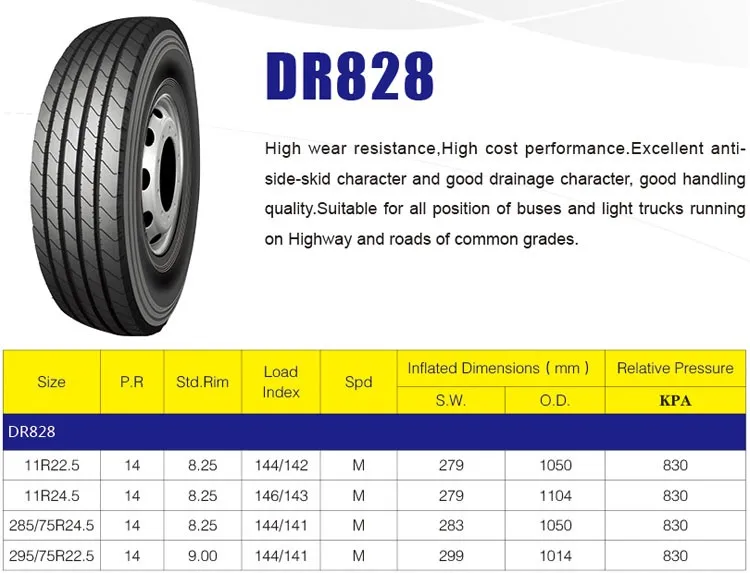 65 with two. As you can see, the permissible load when using the paired version is not doubled, as many people think, but only by 5-7%.
65 with two. As you can see, the permissible load when using the paired version is not doubled, as many people think, but only by 5-7%.
Important
Speed Index - a parameter that displays the maximum speed declared by the manufacturer for the selected rubber. It is indicated in the form of a Latin letter.
As a rule, trucks are equipped with tires of type "M", which limits the speed to 130 km / h. Other options are possible: L (up to 120 km/h), N (up to 140 km/h). During operation, it is important not only not to exceed the maximum parameter, but also to keep the speed 10-20% less than the permitted one. nine0003
The choice of tires for trucks requires special attention and consideration of a number of features indicated in the article. At the same time, please note that the price of truck tires depends on many aspects: manufacturer, size, rubber composition, type, etc. As for the resource, it depends not only on the quality of the tires, but also on compliance with the rules of storage and operation.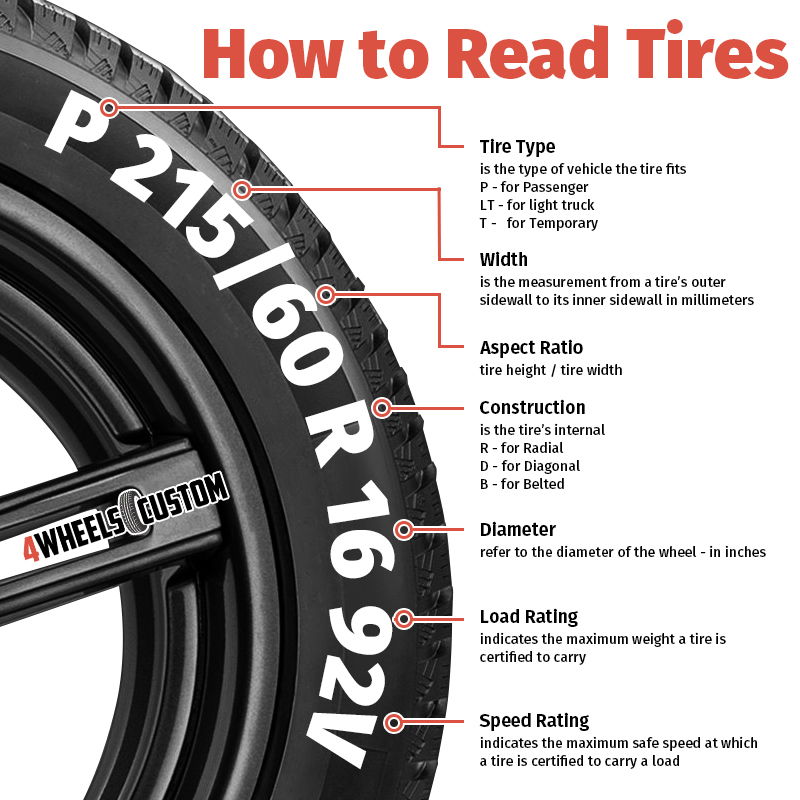
The sidewalls of truck tires contain all the information necessary to identify them, but the decoding must still be understood. Therefore, we give the maximum occurring values.
Marking of radial tires
for example: 315/80 R22.5 156/150L
315 Shine profile width
R "Radial design" designation
22.5 bore diameter in inches (corresponds to rim diameter)
150 load capacity index (INS) for single wheels (maximum load on a single tire) (decoding of indexes)
156 load capacity index (SINF6) for dual wheels (maximum load per dual tire)
L Speed Category Index (SSI)
Example: 12.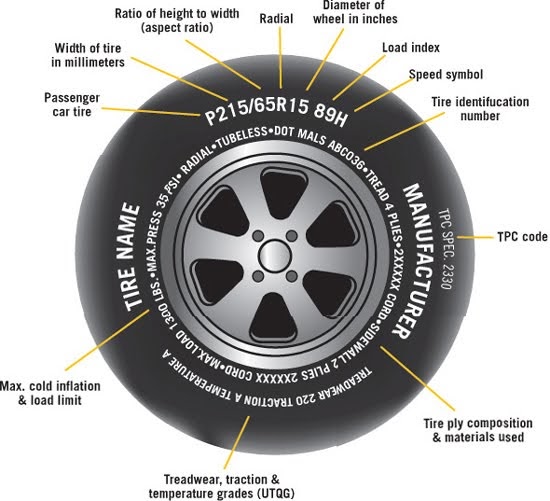 00 R20 Bridgestone M840 154/150K 18PR TT Universal
00 R20 Bridgestone M840 154/150K 18PR TT Universal
12 tire section width (inches) Two zeros through a dot mean the ratio of profile height to width equal to 100%. The one in the hundreds place is omitted. So an 8.25 type designation would mean a profile width of 8 inches, with a height to width ratio of 125%
R radial
20 tire mounting diameter (in inches)
| 215 mm Tire profile width | |
| 75 mm Tire profile height The value obtained by subtracting the disk diameter from the external diameter of the tire and divided by 2 Profile Profile height to width ratio. | |
| R17.5 Tire seat diameter tires) |
0186 The ratio of profile height to the width of the profile in traditional off-road tire is 95%
For example: 18.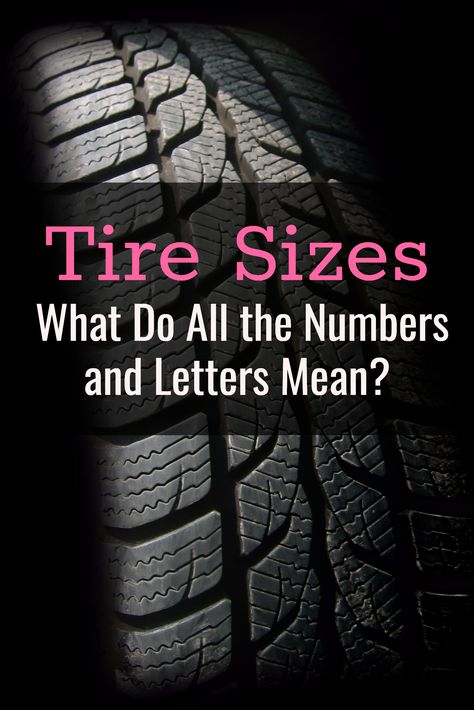 00-25
00-25
18.00 Shine profile widom 25 The tire of the tire of tire in the dummy in the duma – section height to section width ratio is about 85%
For example: 23.5-25
23.5 tire section width in inches
25 Diameter of the tire rim in inches
Low-profile tires- The ratio of height to the width of the profile is 65% or 70%
16/70-20 tire profile in inches
70 profile (nominal profile height to width ratio in percent)
20 tire rim diameter in inches
Alternate tire markings - for tires used on loaders and agricultural machinery, alternative marking is used that determines the external diameter of the tire
for example: 28 DYUNA inch
15 inch
| R (Radial) | radial tires | ||
| PR (Ply Rating) | carcass strength (load-bearing capacity) is conditionally estimated by the so-called ply rating.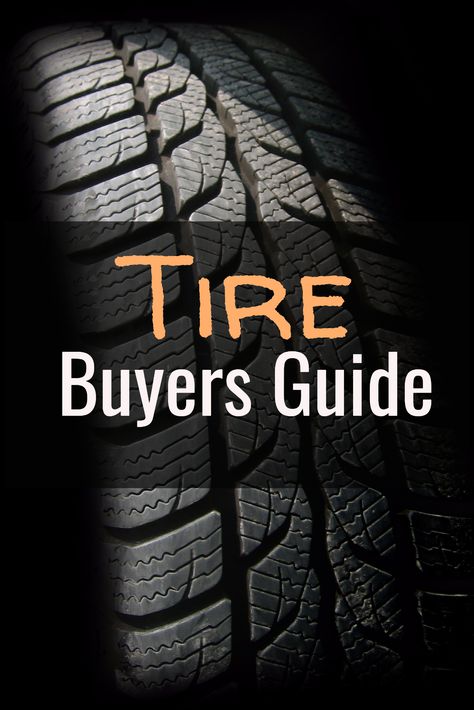 The stronger the carcass, the more air pressure the tire can withstand, and therefore has a greater load capacity The stronger the carcass, the more air pressure the tire can withstand, and therefore has a greater load capacity | ||
| 0270 | |||
| Outside and Inside (or Side Facing Out and Side Facing Inwards) | Asymmetric tires that require strict tire-on-rim installation. The inscription Outside (outer side) must be on the outside of the car, and Inside (inner side) - on the inside | ||
| Left or Right | The tires of this model are left and right. When installing them, you must strictly follow the rule of installing a tire on a car, the left ones only on the left, and the right ones, respectively, only on the right | 385/95R24 = 14.00R24 | 550/65R25 = 20.5R25 |
| 240-508 = 8.25-20 | 335/80R18 = 12.5/80R18 | 385/ 95R25 = 14.00R25 | 650/65R25 = 23.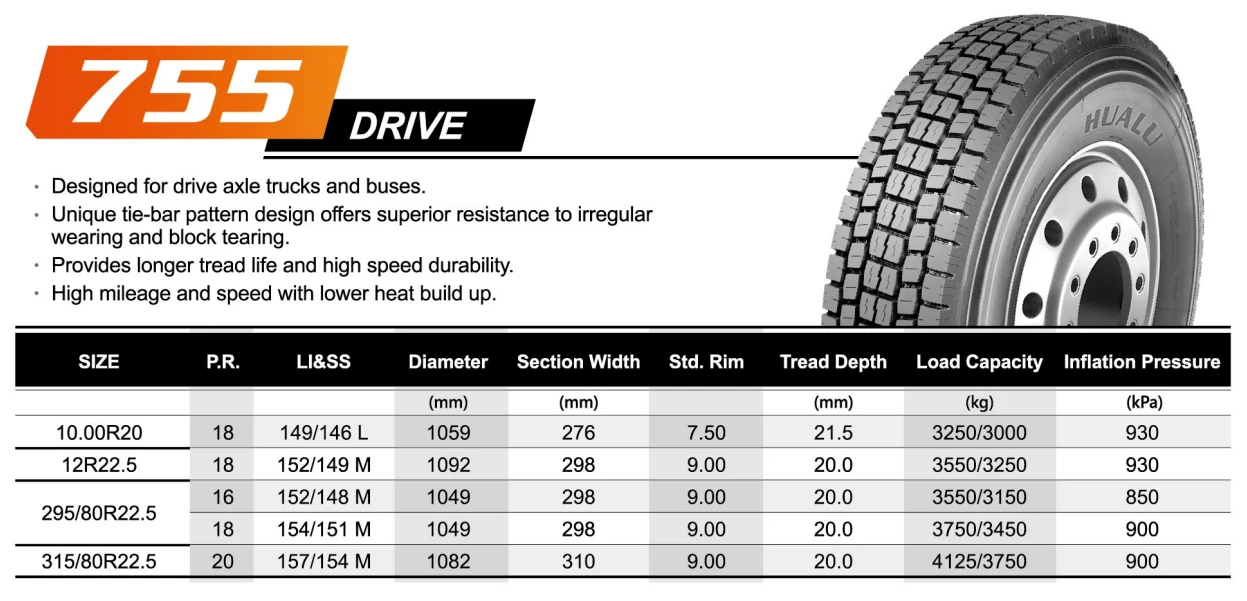 5R25 5R25 |
| 260R508 = 9.00R20 | 335/80R20 = 12.5R20 | 445/95R24 = 16.00R24 | 750/ 65R25 = 26.5R25 |
| 280R508 = 10.00R20 | 375/75R20 = 16.0/70R20 | 445/95R25 = 16.00R25 | 875/65R25 = 29.5R25 |
| 300R508 = 11.00R20 | 405/70R20 = 16.0/70R20 | 505/95R25 = 18.00R25 | |
| 320R508 = 12.00R20 | 440/80R24 = 16.9R24 | 445/80R25 = 17.5R25 | |
| 370R508 = 14.00R20 | 460/70R24 = 17.5LR24 | 525/80R25 = 20.5R25 | |
365/85R20 = 14.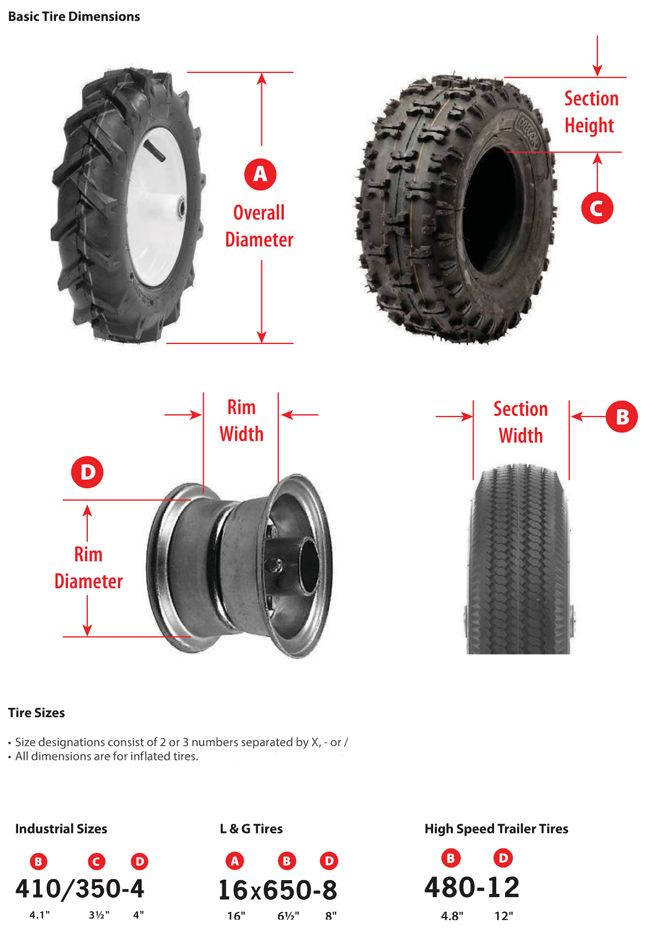 |